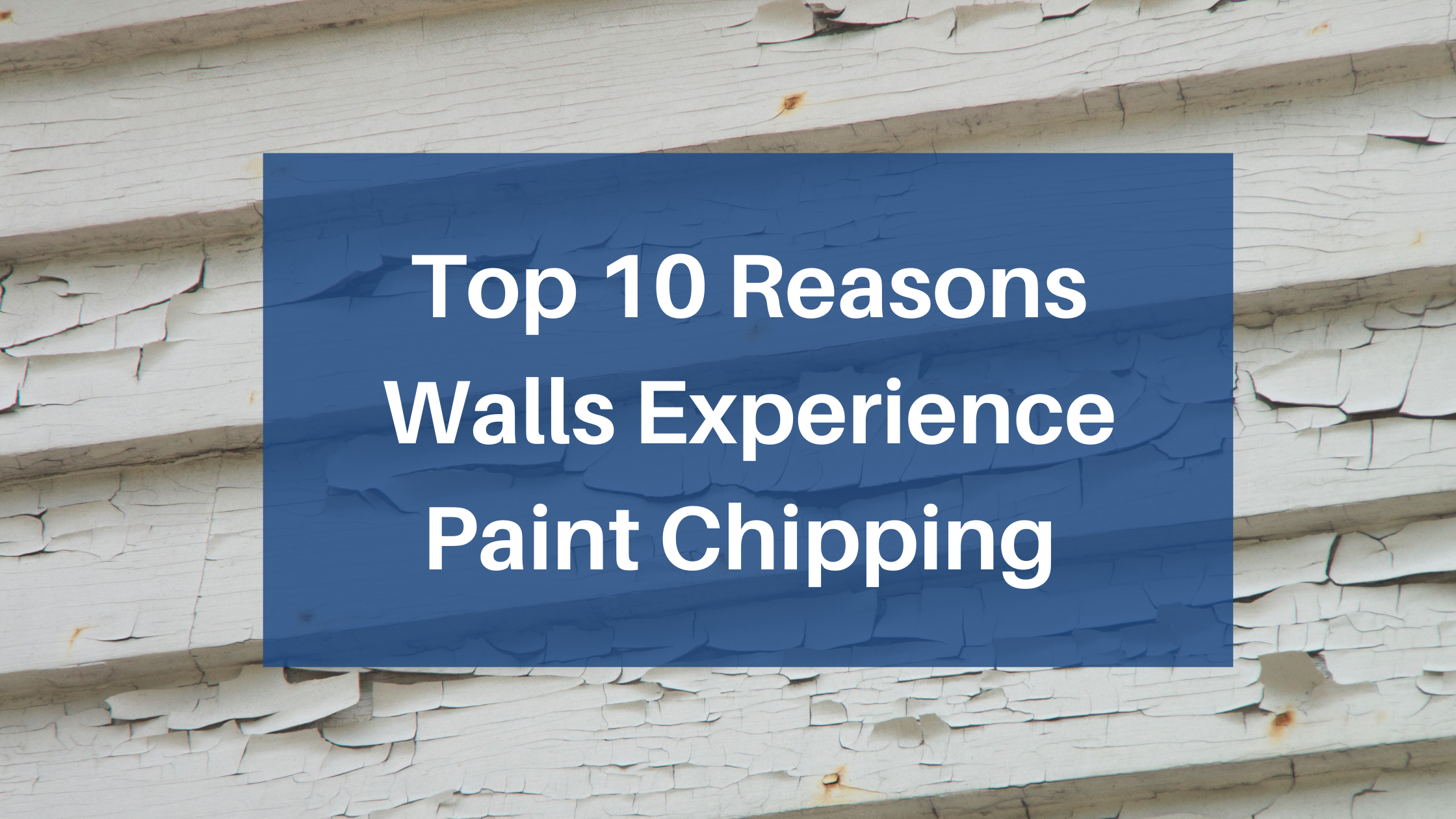
Top 10 Reasons Walls Experience Paint Chipping
If the paint inside our outside your house is flaking or chipping away, there are various possible problems, but one real fix. Find the source, repair it, patch with plenty of dry time, prime well, and finally, the topcoat.
1.Dirty Walls
If the space’s walls were painted in the past but were not cleaned well, you may have flaking of the topcoat. Repairing this will take some
- scraping
- filling or repair
- dry time
- priming
- dry time
- top coat
Dry time is critical between each step.
2. Poor Prep Work
When you’re ready to get a wall fixed so it’s beautifully smooth, be prepared for that dry time. Painting over a wet patch or wet paint will always result in more cracking. Additionally, an excellent prime job is critical to a quality topcoat.
3. Wet Base Layer
If the topcoat is rushed before the primer is completely dry, you’ll deal with the condition that house painters call “alligator peel” or puckered cracks in the paint. You’ll have to scrape down to the base of the cracking, patch, and repair.
4. Wet Patchwork
Some patches take some serious dry time, especially if the patch is large. Work in slow layers to first stabilize the crack, then fill, dry, and sand each layer. Painting over a wet patch becomes a forever crack.
5. Moisture Behind the Wall
If there’s moisture coming in behind the wall, such as a concrete block or poured wall, you’ll need to seal the wall before you can get a good paint job to stick.
6. Moist Conditions
If the bathroom walls are cracking, it could be because the wrong paint was used to coat the walls or that they weren’t appropriately primed. This can also occur in kitchens.
7. Sun Exposure
The desert sun can be very hard on paint. As it fades, it can become brittle and crack or flake away. If you notice this happening in your home, particularly on any wood on the structure, you may need to replace trim or re-seal the wood to get the paint to cling correctly.
8. Shifting Walls
In homes with plaster walls, shifts can mean small cracks in the plaster. Should moisture get in through the cracks, you can end up with flaking paint around a crack. Plaster is touchy; if you can’t get your patch to stick, you can end up with a bigger crack than you started with.
9. Wallpaper Adhesive
If your walls weren’t correctly sized and you had to scrape away the wallpaper, it may be almost impossible to get all the glue off. You may need to have your walls professionally skim-coated, primed, and painted for best results.
10. Wrong Patch Material
If a crack or hole needed joint compound and it got filled with something else, paint may cling poorly, or the patch may crack and shed the paint. If you’ve got a chip you can’t get rid of, look for a bad patch.
If you’re not sure where to start on your chipped walls, contact Ram Painting for a consultation and quote. Your best plan is to work with a painting company that puts in the time to do it right the first time so that you can enjoy beautiful, smooth walls. Read these 4 steps on how to patch and paint well blemishes.

